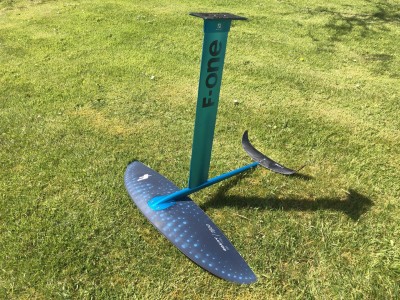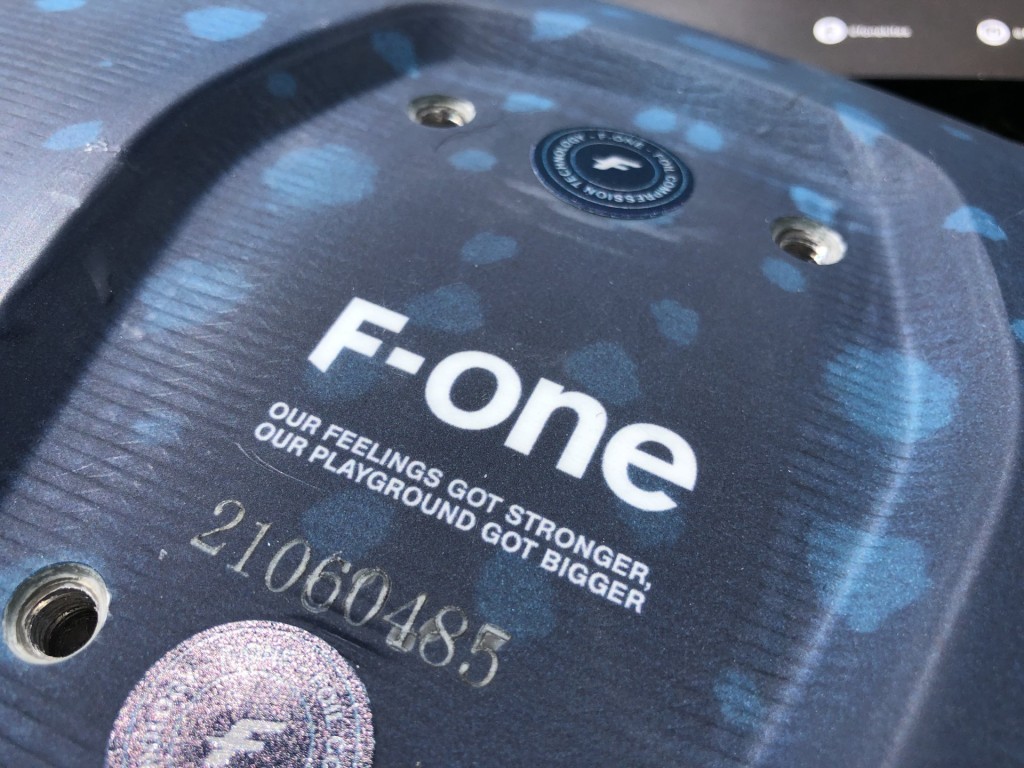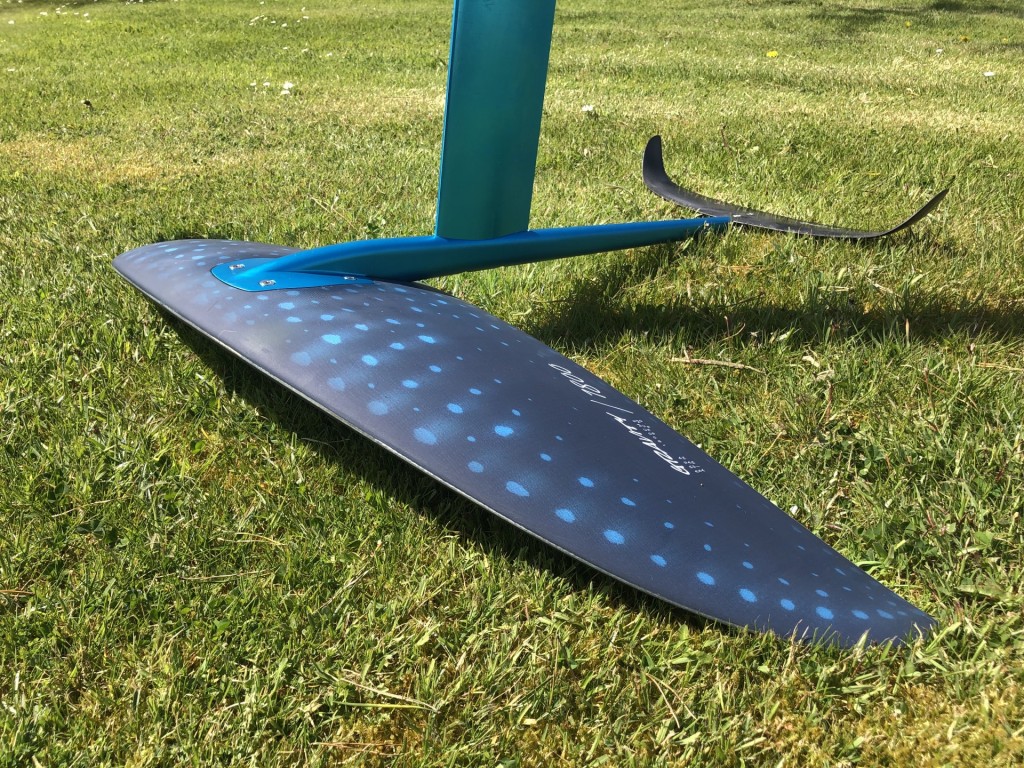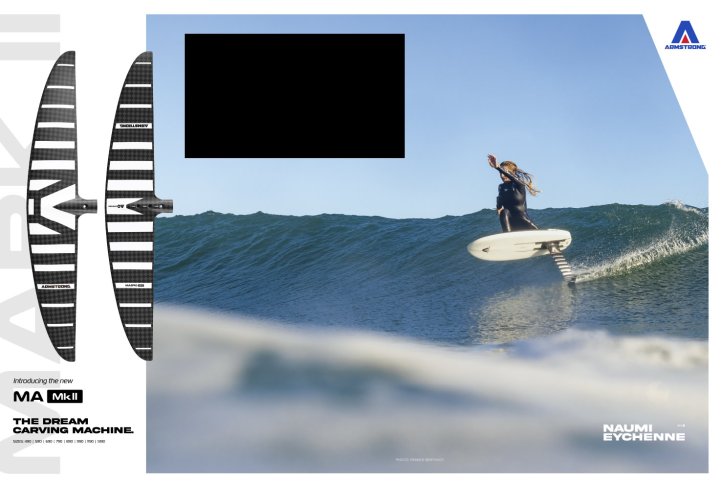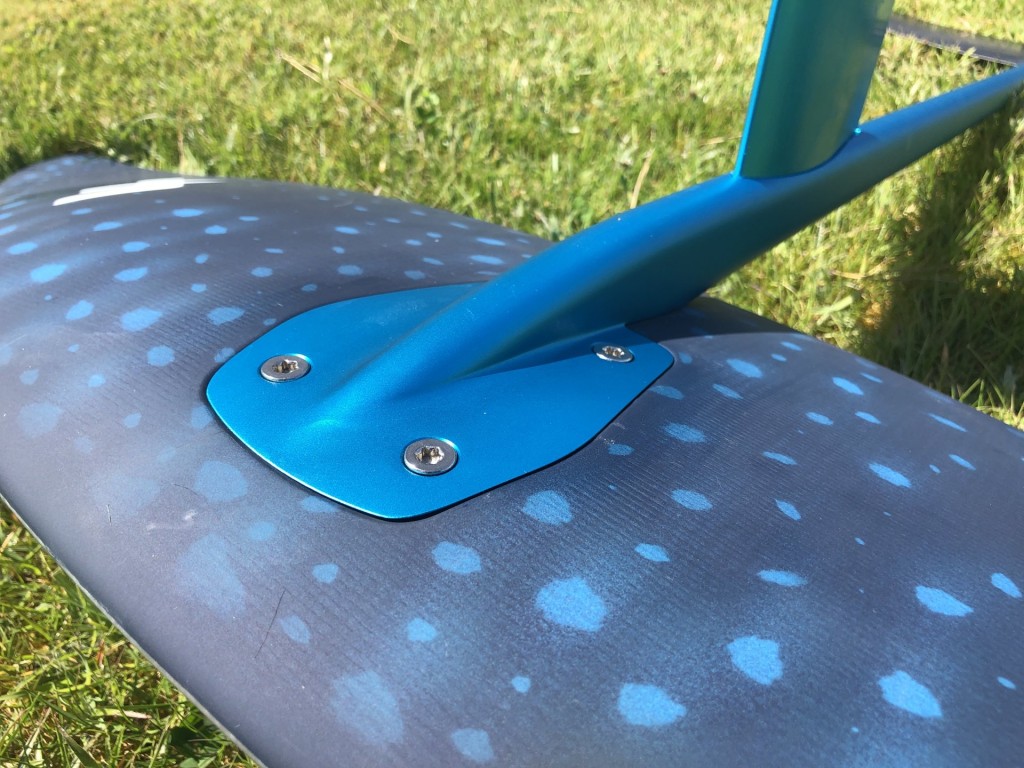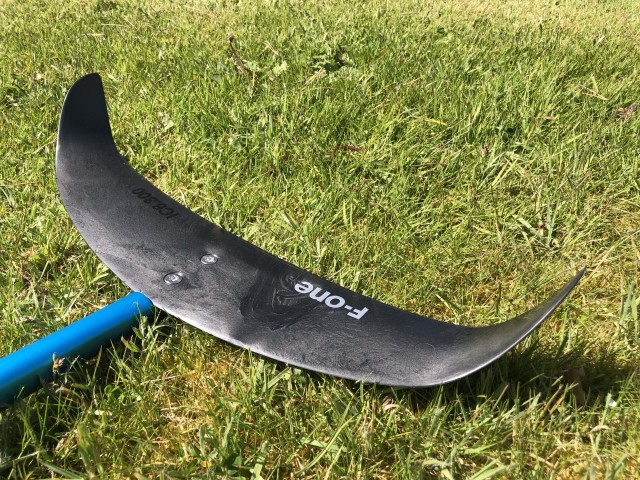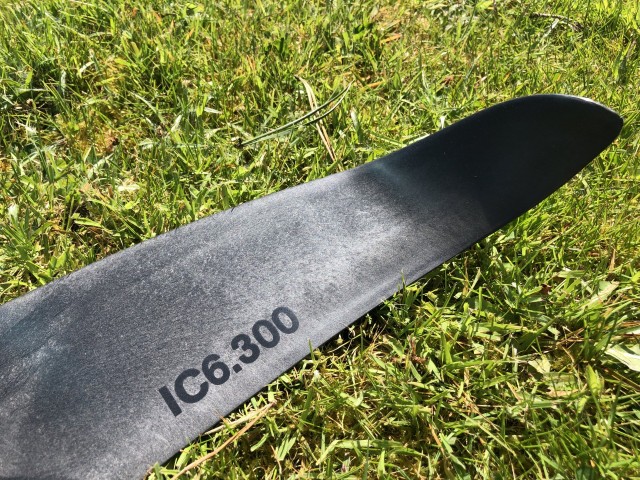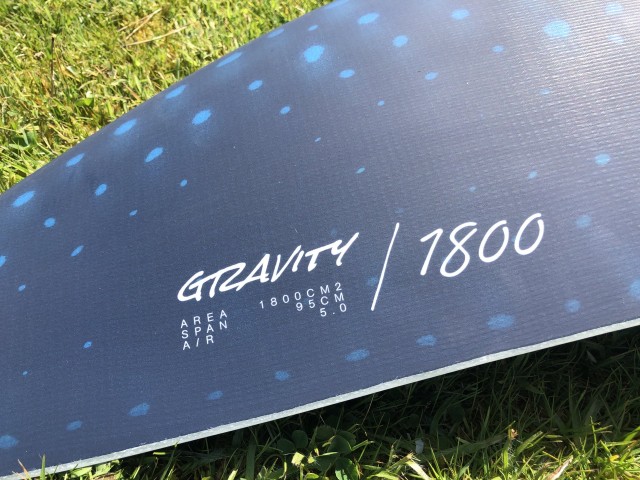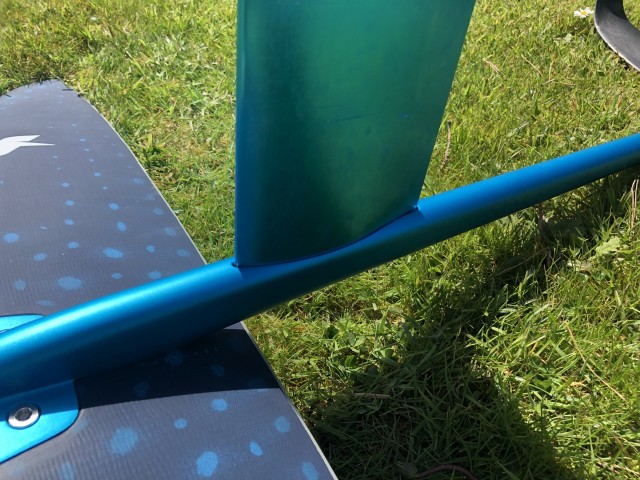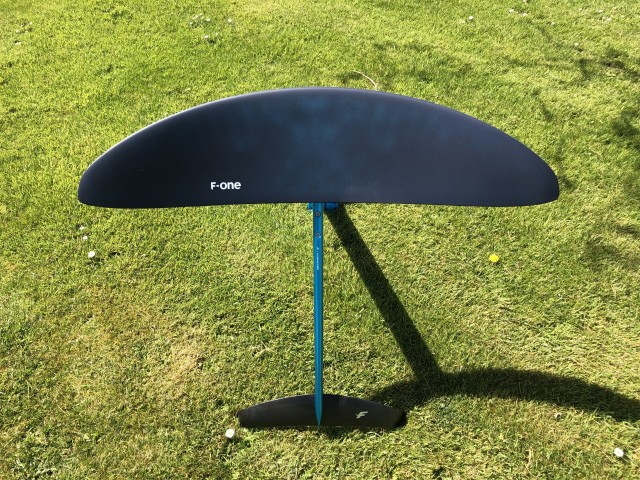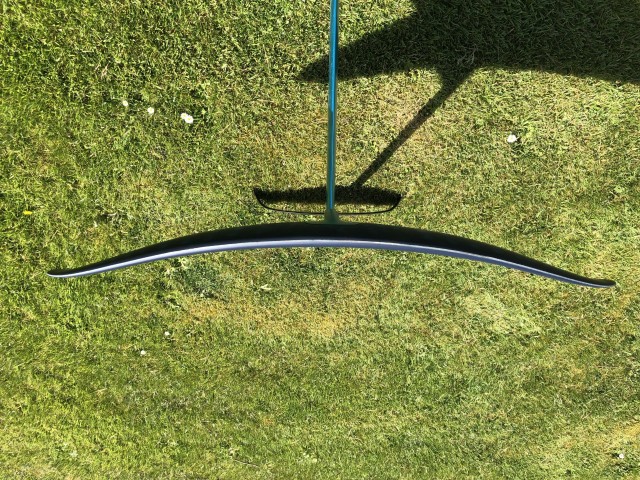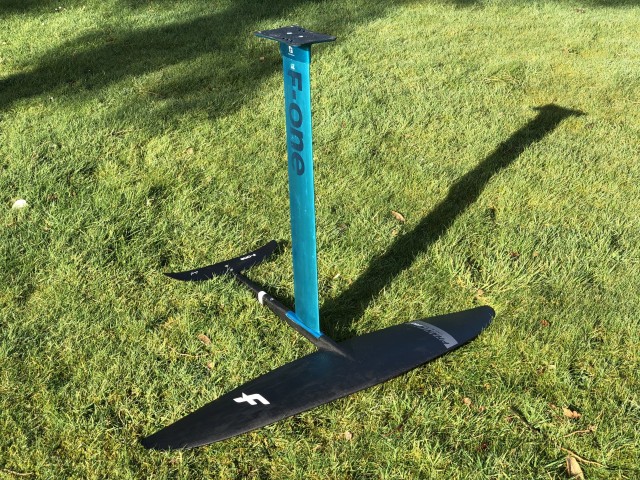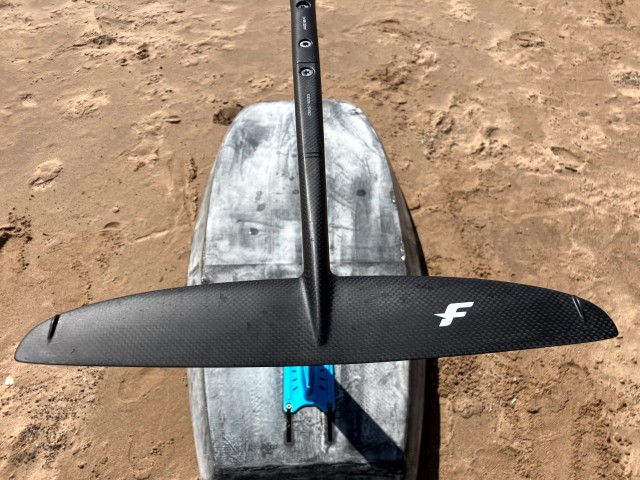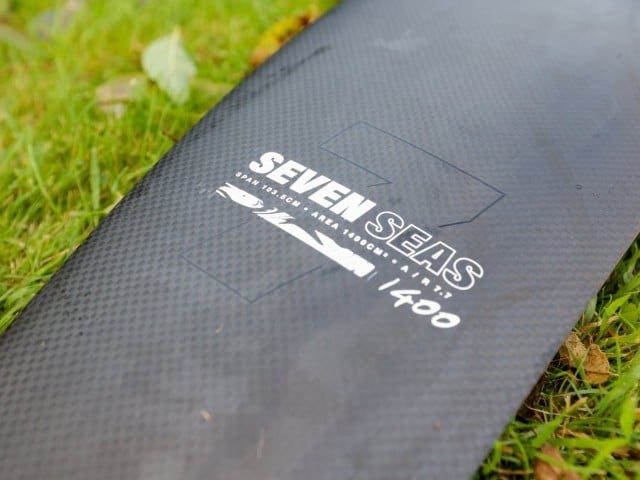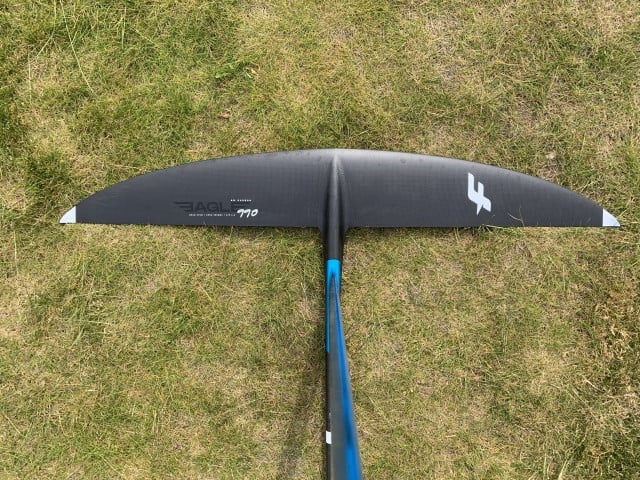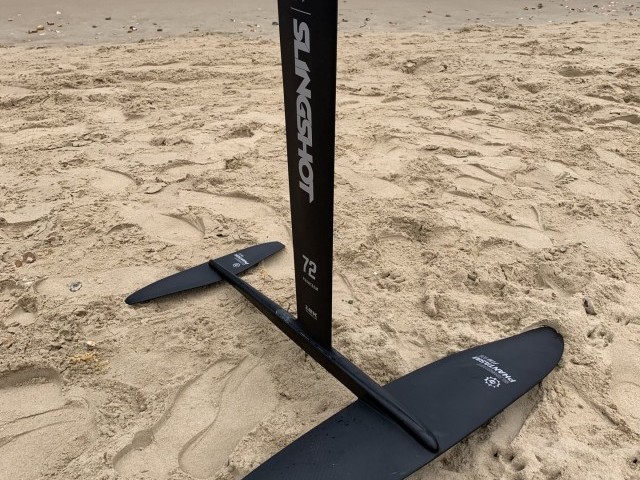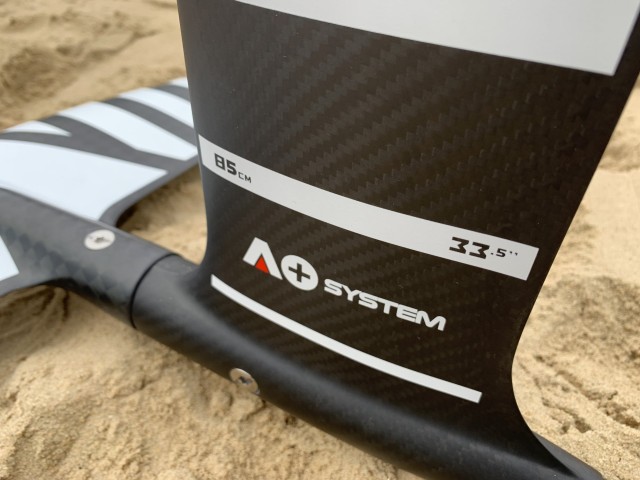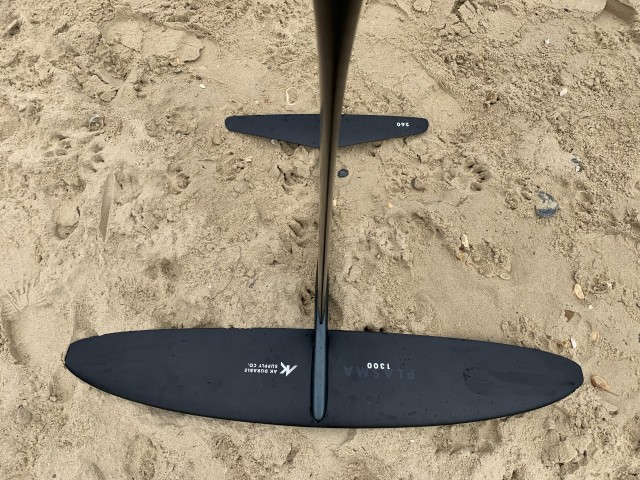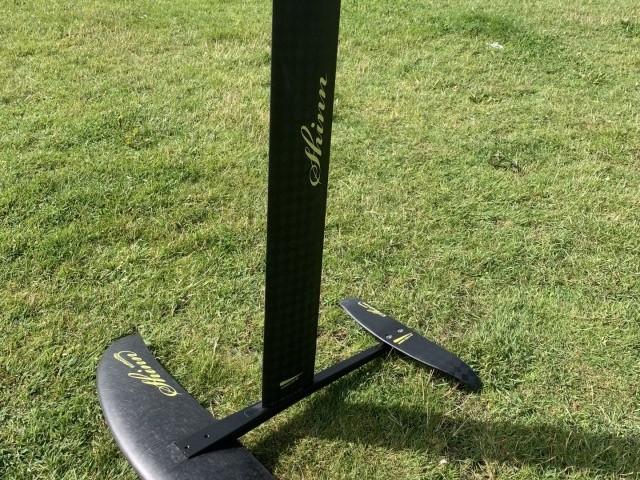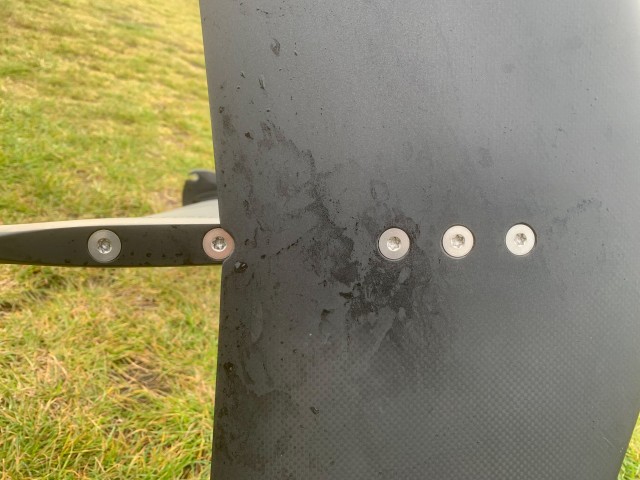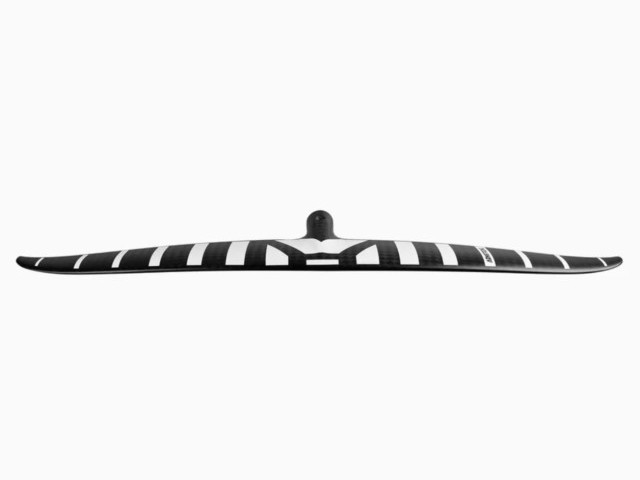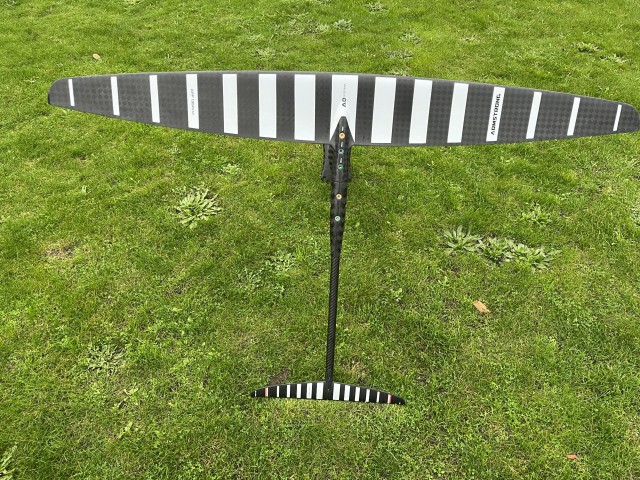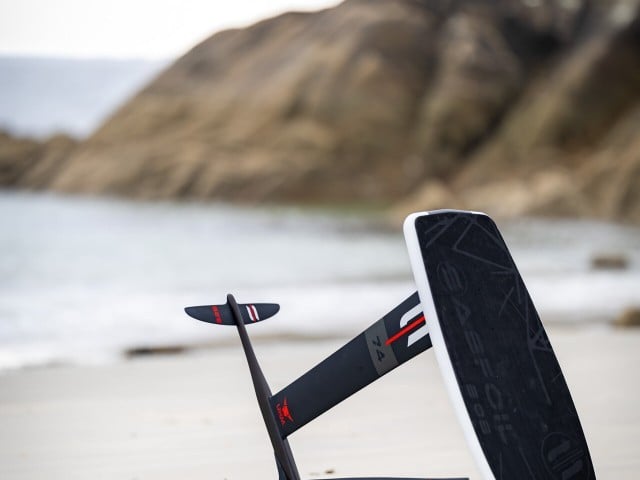At A Glance
F-ONE’s impressive range of hydrofoils have been keeping riders entertained for many years now; the brainchild of naval architect Charles Bertrand they are always impressive. There are two construction methods: a full carbon premium line-up and the Fibre Compression Technology range or FCT for short. There are the Phantom high-performance shapes and the Gravity range, which is designed to be a little easier to ride and more forgiving.
The impressive thing is that the whole range is very interchangeable, allowing you to purchase just one mast and use it with both the FCT and Carbon range of wings. The fuselages are range specific, though; a carbon fuselage isn’t compatible with the FCT system as the connections for the front wings are different.
The carbon line up has the wing and half the fuselage as a moulded piece, while the FCT line uses what F-ONE call a Fusion Link. This is a large plate on the front of the fuselage that mounts to a recess on the front wing and then uses four bolts to secure it in place. This offers a much stiffer mount than simply bolting the front wing on with bolts in a single line to the fuselage. The big news is the FCT range is considerably cheaper than the full carbon line-up; it uses the same shapes and profiles, though, so aside from a weight advantage, the performance is pretty similar. This makes for incredible value for money with the FCT range, especially when paired with an aluminium mast.
Weight is always a consideration, and the FCT range is heavier than the carbon versions, but it’s not overly heavy like some of the set ups we have tested in the past. This 1800 wing is designed to be perfect for your first adventures on a foil and also great for surf foiling. It’s a lower aspect design with a very chunky profile, way thicker than the Phantom.
Designed for carving and control, it’s a great first stop on your foiling journey; there is also a huge 2200 version for really light winds and bigger riders or people looking for the ultimate in stability for learning.
On The Water
Having previously been on the Phantom 1780 Carbon wing from F-ONE, I was keen to see how this FCT technology looked and felt, especially when you consider it is about a third of the price. This set up with mast, and everything you need retails for under £1000 in the UK, which is very competitive.
As ever, the F-ONE build quality is phenomenal; everything fits together really smoothly and is incredibly well machined. Perhaps the biggest difference is the Fusion Link; this creates a very solid connection for the front wing. Most importantly, it does not involve bolts going all the way through the front wing, which hugely enhances the stiffness and strength of this high load area.
We love the look of the FCT range, with the blue graphics resembling the subtle colourings on some of our favourite marine creatures. We NEVER talk about colours in our reviews as it’s so subjective, but kudos to F-ONE; these look good enough to eat a whale steak on.
Having spent years riding and testing hydrofoils of all shapes and sizes, I had some thoughts about the Gravity 1800 before it even got wet. Compared to the Phantom, it just looks lower performance; the deep profile had me thinking slow, with loads of lift and easy to ride. Once I got on the water, I was almost right, but not quite. Loads of lift, yes, easy to ride, double yes. Slow, definitely not; this thing is freaking awesome. It’s fast and happy to go faster if you push it; at first, I spent a while wondering why you would choose a Phantom over the Gravity. It felt like it had a similar performance, but it was easier to ride, more forgiving and was making me look far more skilled than I am able.
However, I was riding powered up, and when there is lots of wind the Gravity delivers, the performance is similar to the Phantom. When the wind dies, though, and you need to pump and glide, this is where a higher aspect wing like the Phantom comes to the fore. For powered up conditions, I’d choose the Gravity over the Phantom every time; it’s just easier to ride. When it gets gusty, marginal, or I’m underpowered on the wing, that’s when the performance of the Phantom shines through.
The Gravity is as smooth as melted butter through the water, and beginners and lesser skilled riders will love the accessibility of this wing, not to mention the low entry price point for something of this quality. If it’s windy, the performance is almost on par with the Phantom Carbon 1780; when it’s marginal, though, you can see where the Phantom shines.
Overall
The price point coupled with the build quality alone should be compelling enough, but more than that, the fun factor here is off the charts. Easy to ride, stable and ridiculously forgiving, I soon fell in love with the carving nature of the foil. It makes me shine on the water, and that is important. It would be great for learning to surf foil on too, the predictable nature and incredibly low stall speed will be a bonus here. Performance is on tap, and there is a lot to love with the Gravity 1800; we predict a lot of riders are going to agree with us here. For the money you can’t go wrong, prepare to be surprised just how capable this set-up is!
This review was in Issue 8 of Tonic Mag.
For more information visit F-OneRelated
By Rou Chater
Rou Chater has been kitesurfing for over twenty years, paddleboarding for the last six years, and was there testing the first wingsurfer from Naish in Tarifa when it arrived on the continent. He is passionate about riding waves and exploring new places. As the publishing editor, he oversees everything at Tonic but also our sister magazines IKSURFMAG and IMB. He's been on the water since he was born and has never looked back, in the winter you'll find him chasing swells in the Caribbean and during the summer he can be found all over Europe at various SUP, Kitesurf and Mountain Bike events getting features for the magazines.


